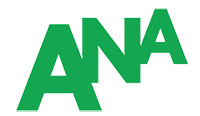Promotion Spending Outweighed Advertising In 2002.
April 27, 2003
The Promotion Marketing Association (PMA) released the results of a 2003 Promotion Trends Report, which established, among other findings, that promotion spending outweighed advertising spending in 2002. The survey found that $233.7 billion was spent on consumer promotion. The study results were then compared to recently reported Intellitrends data, which indicated that advertising accounted for $211.7 billion in 2002. As such, spending on consumer promotion in the U.S. represented 26.5% of marketing spending, where advertising represented only 24%. The remaining half (49.5%) of marketing dollars spent in 2002 is reflected in trade marketing.
This relative differential is supported in the PMA/PROMO study as well, which asked its respondents (PMA members and PROMO subscribers) to break down marketing budgets by percentage spent on each tool. Specifically, brand marketer respondents said that over 57% of their marketing dollars went into trade or consumer promotion, while approximately 37% went into advertising.
Event Marketing, Sponsorships, and Sweepstakes Usage Increase
The survey found that the percentage of total dollars spent on event marketing increased by six percent from 24% in 2001 to 30% in 2002, followed by 5% increases each in contests and sweepstakes (16% to 21%), sponsorships (12% to 17%). Couponing increased by 3% (14% to 17%). The most dramatic reduction in spending (13%) was witnessed in co-marketing, which dropped from 28% in 2001 to 15% in 2002. Spending for direct mail, POP displays and premium incentives held steady from 2001 to 2002.
The survey also indicated that the top three promotion tactics utilized in 2002 were online promotions (identified by over 15% of total respondents), research (13%) and in-store initiatives (10%), whereas in 2001, the leading tactics were trade shows (26% of total respondents), online promotions (26%) and tie-ins/alliances (17%).
ROI Measurement?
The survey found that almost half (44%) of brand managers did not measure their promotions’ return on investment (ROI) in 2002, but that nearly three-quarters (70%) say measurement of ROI will be a higher priority in 2003. Among agency execs, however, 57% report that their clients measure brand awareness when evaluating a campaign’s effectiveness, and also noted incremental sales (51%) and response rates (45.8%) as top indicators of promotional success.
“Consumers are responding more than ever to promotion, with 60% indicating that they have ‘purchased a brand due to promotion’ in the past 12 months,” said Claire Rosenzweig, CAE, president, PMA. “This combined with the advance of promotion over advertising confirms what we have always known – promotion works – it engages the consumer on a personal level, forges a strong connection with the brand, and drives sales.”
The survey also showed that C-level executives are showing interest in promotion planning and development for their brands, finding that, more often that not (57% of the time), CEOs and presidents are present during promotion strategy sessions. Also at the table are directors of promotions, promotion managers, brand managers, assistant brand managers and promotion agency execs. The study also found that those at the planning table are looking for more targeted programs, and as such, agency respondents reported that almost 53% of all projects were being geared toward specific groups rather than a general audience.
“Promotion is increasingly used as a branding tool – one that is not only attracting the attention of the consumer, but senior level management as well,” said Kathleen Joyce, editor, PROMO magazine. “Over half of the respondents (52.6%) indicate that promotion is built into the marketing plans from the start – reinforcing its prominent place in the marketing mix.”
For more information at http://www.pmalink.org





























